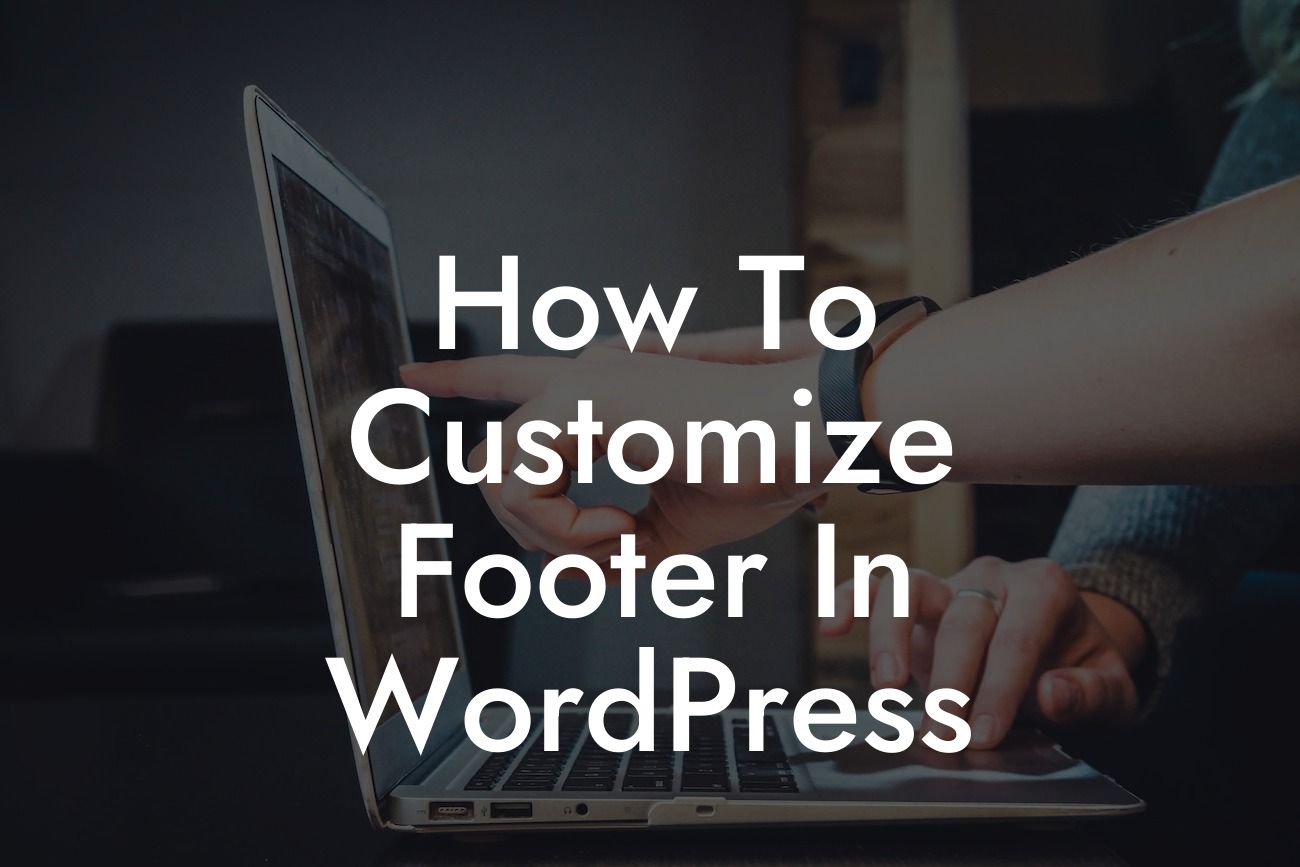Are you looking for ways to give your WordPress website a unique and professional touch? Customizing the footer is a great place to start. The footer section of your website plays a crucial role in providing important information, enhancing user experience, and adding a touch of personality. In this guide, we will take you through the steps of customizing the footer in WordPress, providing you with detailed instructions and expert tips. Get ready to transform your website and leave a lasting impression on your visitors.
To begin customizing the footer in WordPress, there are a few different approaches you can take. Let's explore some of the most effective methods:
1. Using a Theme Customizer:
One of the easiest ways to customize the footer is by utilizing the built-in theme customizer feature in WordPress. Most modern themes offer a range of customization options, including the ability to modify the footer section. Simply navigate to the theme customizer in your WordPress dashboard and look for the footer customization section. From there, you can make changes to the layout, color scheme, text, and more. Experiment with different options until you achieve the desired look and feel.
2. Adding Widgets to the Footer:
Looking For a Custom QuickBook Integration?
Widgets are powerful tools in WordPress that allow you to add various functionality to your website. You can utilize widgets to customize the footer and showcase important content or features. To add widgets to the footer, go to the Widgets section in your WordPress dashboard. Look for the footer widget area and drag and drop the desired widgets into it. Popular options include social media icons, newsletter signup forms, recent posts, and contact information. Make sure to arrange the widgets in an aesthetically pleasing manner to create a visually appealing footer.
3. Modifying the Footer.php File:
For those comfortable with coding, modifying the footer.php file directly offers more control and endless possibilities. Access the appearance editor in your WordPress dashboard and select the footer.php file. Here, you can edit the HTML and CSS code to customize the footer according to your preferences. This method allows you to create a truly unique and tailored footer design, but exercise caution and back up your files before making any changes.
How To Customize Footer In Wordpress Example:
Let's say you're a small business owner running an online store. You want your customers to have easy access to your contact information, social media links, and shipping details. By customizing the footer, you can achieve this in a visually appealing way. Add widgets displaying your business address, phone number, and email address. Include social media icons with links to your profiles. Finally, utilize DamnWoo's plugin to embed a dynamic shipping information section that updates according to the customer's location. The possibilities are endless when it comes to customizing the footer to meet your unique needs.
Congratulations! You have successfully learned how to customize the footer in WordPress. By following the steps outlined above and leveraging DamnWoo's powerful plugins, you can transform your website's footer into a beautifully designed and functional asset. Don't stop here, though. Explore other guides on DamnWoo to enhance various aspects of your online presence. And, don't forget to try one of our awesome plugins to supercharge your success. Share this article with fellow entrepreneurs and small business owners to help them elevate their websites too. Happy customizing!













